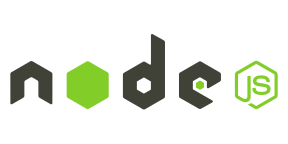It is a descendant of Borg, a container orchestration platform used internally at Google. Kubernetes is Greek for helmsman or pilot, hence the helm in the Kubernetes logo (link resides outside of ibm.com). Kubelets work from a set of instructions, or PodSpecs, that indicate which containers should be running within a Pod at any given time. Pods are the smallest and simplest units of the Kubernetes architecture. If you only need to run a few containers on your computer or a local machine, then there’s nothing to worry about. They probably don’t require a lot of system resources, and you can easily troubleshoot issues like a container shutting down unexpectedly.

Kubernetes is an orchestration tool for containerized applications. Starting with a collection of Docker containers, Kubernetes can control resource allocation and traffic management for cloud applications and microservices. Virtual machines (VMs) are servers abstracted from the actual computer hardware, enabling you to run multiple VMs on one physical server or a single VM that spans more than one physical server.
Project Management Skills That Can Help in Any Role
This week, you will learn how to effectively work with the Docker client, create volumes, and run databases in containers, gaining hands-on experience in managing containerized applications. You will also explore how to use the Docker command line for tasks such as building images and working with Dockerfiles, enabling you to package your software efficiently. You’ll get a chance to study real-life Dockerfile examples and consult the Dockerfile reference for best practices. Furthermore, you will dive into orchestration with Docker Compose, learning how to manage multi-container applications using Compose. As an extension to this, you will be introduced to Airflow, a workflow management platform, and learn how to integrate it with Docker Compose for a seamless automation experience. A master Kubernetes server will manage a cluster of worker nodes.

4 days of incredible opportunities to collaborate, learn + share with the entire community! After reading this guide, you should understand the role of Kubernetes operators in creating a more streamlined Kubernetes experience. Operator designers must learn and follow best practices to create effective and maintainable operators. The sections below contain the most essential best practices for writing your Kubernetes operators. Since 2011, works with highly available and scalable applications.
iPhone
Before you can solve a problem, you have to first find out the origin. As useful as they may sound to you, the ReplicationController is not the recommended way of creating replicas nowadays. The UI is pretty user-friendly and you are free to roam around here. Although it’s completely possible to create, manage, and delete objects from this UI, I’ll be using the CLI for the rest of this article. In a previous section, you used the delete command to get rid of a Kubernetes object.
- If an instance is deleted or updated, the Controller scans the state of the cluster, compares it to the desired state, and makes any necessary changes.
- But the only reason for a custom image is if you want the database instance to come with the notes table pre-created.
- Whether testing locally or running a global enterprise, Kubernetes flexibility grows with you to deliver your applications consistently and easily no matter how complex your need is.
- You can either use a static or dynamically provisioned persistent volume for the rest of this project.
- This is a very simple JavaScript application that I’ve put together using vite and a little bit of CSS.
- Now that you have created a persistent volume and a claim, it’s time to let the database pod use this volume.
In your local setup, minikube is a single node Kubernetes cluster. So instead of having multiple servers like in the diagram above, minikube has only one that acts as both the main server and the node. If you want to auto-scale certain services, you’ll almost always need to be talking to a cloud provider’s API to provision new resources. Kubernetes can handle this for you for many platforms, but services like AWS, Azure, and GCP all have simple container services with auto-scaling features. AWS’s ECS service can easily be set up to auto-scale to meet high demand.
Container runtime
Kubernetes boasts a wide range of features aimed at automating and facilitating the deployment of containerized applications. While the standard Kubernetes installation satisfies most users’ needs, many use cases could benefit from additional functionalities. Deploying and managing applications in Kubernetes often involve creating kubernetes based assurance and managing Pods. Pods are a group of one or more containers, with shared storage and network resources, and a specification for how to run the containers. A Cluster is a group of Nodes, which are the workers that run your applications. Each Node is a separate machine, either physical or virtual, depending on the infrastructure.
It is responsible for maintaining the entire network configuration. Kube-Proxy maintains the distributed network across all the nodes, pods, and containers and exposes the services across the outside world. It acts as a network proxy and load balancer for a service on a single worker node and manages the network routing for TCP and UDP packets. It listens to the API server for each service endpoint creation and deletion so for each service endpoint it sets up the route so that you can reach it.
How to Host a Helm Chart
Some help connect a specific application to your cluster, while others provide more general assistance. Now we are able to not only more efficiently manage our application’s resources, but also to publish these resources in an open-source version system without any hassle or security issue. All those values can be obtained from a Values.yaml file (for default values), or you can set them in the CLI using the –set value flag. The scope of the Kubernetes project is to deal with your containers for you, not your template files. The ‘Exit code 1’ error occurs when a container in a pod exits with a status of 1.
And often these tools were developed for the sole purpose of filling the gaps. But it doesn’t cover all the bases on its own – there are some things that Kubernetes cannot solve or that are outside its scope. ImagePullBackOff and ErrImagePull are two common errors that occur when Kubernetes is unable to pull a container image from the specified registry. This could be due to various reasons such as incorrect image name, tag, or registry credentials, or network connectivity issues. Resource Quotas are a tool for administrators to limit the resources a namespace can use.
Install the Kubernetes extension
The self-healing feature of Kubernetes brings a level of resilience that was previously hard to achieve. It reduces the need for manual intervention and helps maintain high availability of applications. Kubernetes’ ability to scale applications is perhaps one of its most attractive features. I remember the days when we had to manually scale our applications.

Before you start writing the new configuration files, have a look at how things are going to work behind the scenes. An IngressController is required to work with Ingress resources in your cluster. A list of avalable ingress controllers can be found in the Kubernetes documentation. Instead, it sits in front of multiple services and acts as a router of sorts. You’ve previously worked with a LoadBalancer service that exposes an application to the outside world. The ClusterIP on the other hand exposes an application within the cluster and allows no outside traffic.
Application Deployment
To resolve this error, you should first check the status of the node using the ‘kubectl get nodes’ command. If the node is marked as ‘NotReady’, check the node’s events and logs for any clues about the issue. Also, ensure that the node has sufficient resources and network connectivity. You can even autoscale monolithic applications using cloud services like AWS Elastic Beanstalk, Google App Engine, or Azure App Service. These all impose far less administrative overhead than Kubernetes, and they all play nicely with CI/CD tools.
Unlocking the Need for Speed: Optimizing JSON Performance for Lightning-Fast Apps and Finding Alternatives to it!
There are multiple approaches that people often take to update a container, but I am not going to go through all of them. This is a more convenient approach as you can skip the whole base64 encoding step. The reason for that is, in this project, the old LoadBalancer service will be replaced with an Ingress. Also, instead of exposing the API, you’ll expose the front-end application to the world. In this example, you’ll extend the notes API by adding a front end to it.
As you already know, services group together a number of pods, and control the way they can be accessed. So any request that reaches the service through the exposed port will end up in the correct pod. You can see the tests that come with the API source code as documentation. You should be able to understand the file without much hassle if you have experience with JavaScript and express. As you can see from the READY column, all the pods are up and running.
